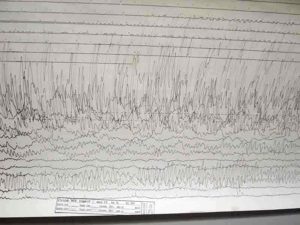
The great 2011 earthquake that caused the tsunami in northeastern Japan is still remembered for its destructive power.
Also known as the Mw 9.0 Tohoku earthquake, the seismic nature of this calamity was not initially entirely clear. While earthquakes resulting from built-up tectonic stress in reverse faulting had only been partially released. In previous studies where complete releases have been posited, the hypothesis was based on seismicity observation and simulation, or on direct stress measurement data above the fault only by using log data.
Now, a team of researchers at Kyoto University has found evidence that a complete stress release may have contributed to the record-breaking event.
“The minor differences between maximum and minimum post-earthquake horizontal stresses near the fault suggest that the Tohoku earthquake occurred upon a complete stress release,” explains lead author Weiren Lin.
The team found that both sedimentary formations above and below the plate boundary fault lie in the stress state of normal faults in which vertical stress is greater than maximum horizontal stress.
“Knowledge about stress changes before and after this earthquake, both above and below a gently dipping fault, can provide us insights into how fault slipping caused the ensuing tsunami,” the author reflects.
Lin’s team was able to collect data for the stress state above the source fault of the Tohoku earthquake, at the boundary between the North American plate and the subducting Pacific plate. However, geophysical data for the stress state below this zone was unreliable.
To address this problem, the team studied one of four drill core samples collected by the Japan Trench Fast — or JFAST — Drilling Project from below the source fault and was the first to successfully reveal the stress state at that depth.
“Our new data show good consistency with previous results above the fault, suggesting that combining geophysical data and core samples to comprehensively investigate stress states is effective.”
Reference:
Weiren Lin, Yuhji Yamamoto, Takehiro Hirose. Three-dimensional stress state above and below the plate boundary fault after the 2011 Mw 9.0 Tohoku earthquake. Earth and Planetary Science Letters, 2023; 601: 117888 DOI: 10.1016/j.epsl.2022.117888
Note: The above post is reprinted from materials provided by Kyoto University.










